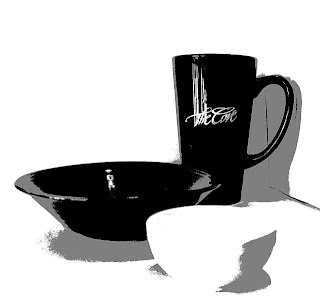Time to make some plans for the new year. I sure hope you'll join us for the next eight week session. I have some great new teaching ideas and plans, focusing us a bit more on composition and how to create a painting that's expressive, personal and successful.
Our next session will be January 13 to March 3, 2011 at the same time and location as always--11:30-2:30, on Thursdays at Paradise Hills Methodist Church in Albuquerque. The cost of the eight-week class remains $200.00. Please click on the Upcoming Classes page, above, for further class policies.
Below is the class plan. Details regarding each class will be posted on this blog sometime during the day on Monday, including the plan for the coming class and any materials you might want to consider bringing, so that you can be prepared to get the most out of it.
I'll discuss the details as we approach the class, but I'm going to change the structure of the class a little this session. As usual, we’ll meet to set up at 11:00, and at 11:30 I’ll do a mini-critique of one WIP (work in progress) from each student, specifically meant to review what was covered in the previous class. At approximately one half hour before closing we’ll gather again at my easel with questions and further discussion when it will be beneficial.
Class Schedule
January 13 to March 3, 2011
Class 1— Jan. 13 – Emulation
If you could paint like another artist, who would it be? I’ll share with you the work of artists I admire and show you why I believe their paintings are successful, pointing out specific art elements. I want you to decide where your overall work needs to improve and search for artwork that does well what you need to improve on. Please bring photographs of two such paintings by any artist, done at any time. We’ll copy—but with a twist.
Class 2— Jan. 20 – Repaint It
Bring one of your paintings today that you feel came close but just didn’t quite make it. My challenge is to repaint it, but instead of painting with your usual medium I want you to change media. I believe that this will enhance the process you use in your more accustomed medium. We’ll begin with a short group critique of the painting to help you decide what needs to be done. When completed we’ll look at the two paintings side-by-side.
Class 3— Jan. 27 – The Value of Value
Today we’ll use no color at all, only black, white and gray. You can paint in pastels, use black and white paint, or draw using pencil, charcoal or whatever media you like—but no color. I’ll share work that exemplifies the critical role value plays in composition, as well as supplying three different photographs you will use as inspiration.
Class 4— Feb. 3 – Vloothuis's “No-fly” Zone
We’ll explore the effects of peripheral vision on all paintings, applying the concept of the “no-fly” zone to composing. Please bring one or more of your unframed paintings, finished or unfinished, to examine for this critical means of looking at composing. The studio portion of this class is open to WIP.
Class 5— Feb. 10 – Evergreen Trees
I’ll email several photographs to you ahead of time so you can play with them—drawing, recomposing on the computer, or doing notan/ thumbnails—but you’ll paint in class after seeing a demonstration showing you some of the key elements you need to consider. The idea is to use the “rules” but customize things, enhancing the painting in your own way.
Class 6— Feb. 17 – Snow: White Without White
How can you paint colorful whites? Don’t use any white! I challenge you to paint from a photograph I’ll provide. Bring a piece of virgin white paper, any size or format, and a clean palette. We’ll discuss how colorful snow (or any white subject) really can be.
Class 7— Feb. 24 – Abstract Landscape Painting: Robert Genn
In this first class of its kind for us, we’ll be inspired by the paintings of well-known Canadian painter Robert Genn, who has a knack for distilling the landscape. He is perhaps best known for his work on (Canada’s) West Coast and in the Rocky Mountains. His technique includes a tradition of strong design using patterns of color and form, with a pervasive sense of personal style. Come prepared to paint any WIP (work in progress) after this presentation and discussion.
Class 8— Mar. 3 - Final Critique and Class Potluck
We’ll do an in-depth crit of the paintings done in this class or anything you’re working on outside of class. Food and fun!













































